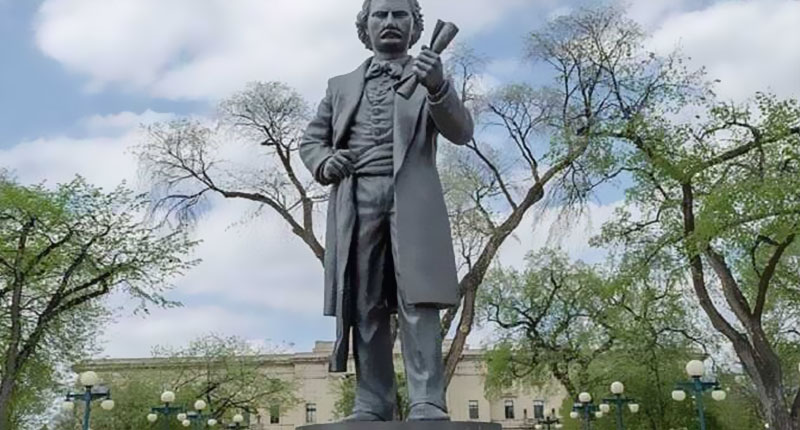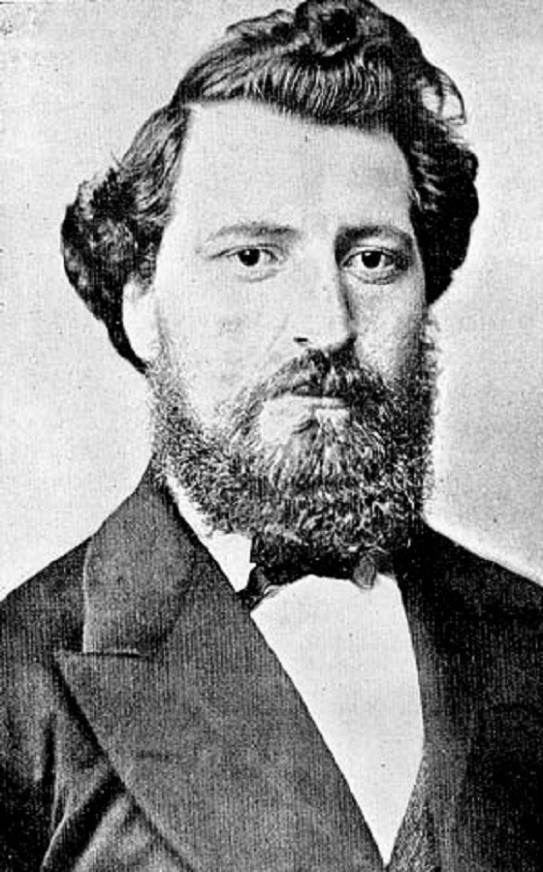
Louis Riel, Rebel or Hero? The Most Controversial Figure in Canadian History!

Hanged from the gallows for high treason in 1885, Louis Riel is now hailed as the hero and protector of the rights of the Métis – the unique community of the descendants of the indigenous inhabitants of Canada, and French and Scottish traders. Despite his education and intentions of becoming a member of the clergy, Louis Riel was one of the most significant leaders of the Red River and North-West resistances in what is known today as Manitoba.
His eventful life and eventual demise have been the source of many historical comments and criticism over the years and the views on Riel have fluctuated during this time. But in order to comprehend the controversy that surrounds this figure, one must become familiar with a morsel of Canadian history that has intensified the polarization of English-French, East-West, and catholic-protestant dichotomies.

Louis Riel in Montana, 1882
Table of Contents
From Priest to The Protector of The Métis
Riel was born in St. Boniface in 1844 and grew up in the Métis community that resided in the Red River Settlement. He started his education to become a priest in a school in Montreal when he was 13 and despite his outstanding performance, he abandoned this pursuit and returned home to the Red River. The chain of events that eventually led to Riel’s execution, started in March 1869, as the Hudson Bay Company sold the North-Western Territory to the Dominion of Canada. As a result, the federal government chose William McDougall as its appointed lieutenant-governor and sent survey crews to the new territories to map and assess the lands.
The Métis community of the Red River which was concerned by the cultural, social, and political outcomes of this union with the Canadian government, assembled the Métis National Committee with Riel as its secretary and later as its head to prevent the union at all costs. The committee stopped the land surveyors at first and then proceeded to stop the arrival of McDougall to the Red River by creating roadblocks and finally established the government of the Red River Settlement by seizing the Fort Gary – now Winnipeg, rejecting Canadian authority.
What ensued the Red River rebellion was a string of negotiations between the Métis and the anglophones of the central Canadian government that was successful in part but was interrupted by an uprising to overthrow the provisional government of the Red River which tarnished the image of Riel. The execution of the English-speaking leader of this rebellion, Thomas Scott, was a stigma that made Riel and his Métis followers a target for hate and hostility.
Fearing for his life and receiving warnings about the Canadian militia that was out to lynch him, Riel fled to the U.S. but this voluntary exile lasted a short while and he returned to Manitoba and tried to become a Member of Parliament. He was denied his seat in Parliament after winning the elections several times and after a trial, he was banished for five years.
During his banishment, he became obsessed with religion and he claimed to receive holy visions declaring himself the prophet of the Métis – naming himself Louis David Riel, Prophet, Infallible Pontiff and Priest King. These concerning behavior and proclamations made his followers commit him to a mental hospital. After his hospitalization and recovery in 1878, between 1879 to 1883, he became an American citizen, married a Métis woman, and settled in Montana.

Louis Riel, shortly after his release from the asylum in 1878
No More Happy Endings for Louis Riel
Louis Riel denounced his happy ending when he granted the request of a group of Métis to act as a representative and protect their legal rights from the Canadian authorities in the Saskatchewan Valley. At this time, Canada had spent a large sum of money on the Canadian Pacific Railway and in order to replenish its funds, the budget of the Indian Department was cut. This budget cut meant that the Canadian government did not hold up its end of the bargain with the natives and caused many casualties among the Métis due to starvation.
Riel returned to resolve the issues with the Canadian government, a delegation was sent to Ottawa to deliver the petition of the Métis but this time negotiation was not an option. So, the open North-West rebellion started with the establishment of the provisional government of Saskatchewan. Unfortunately for Riel and his insurgent forces, the completion of the railway which emptied the government’s coffers, allowed the central government to quickly send in soldiers to crush the rebellion.
The Canadian government used its military might to smite this rebellion and after a period of fighting and resistance, the rebellion failed in 1885, and Riel was arrested. Riel went on trial on 20 July 1885 and after the pleas for his insanity were rejected, he was sentenced to die by hanging for the murder of Thomas Scott. Louis Riel was hanged for high treason in November 1885 in Regina.
Rebel, Hero, Patriot, Prophet, Madman, Martyr, or Simply Louis Riel
History is written by the winners and for many decades, the Canadian government was the winner who vilified Louis Riel as its antagonist when it came to the western expansion of Canada. But historians tried to take a closer look at this mysterious figure with a renewed interest over the past 50 years. His fate, in particular, has become a hot topic for debate among historians, believing it to be unlawful or fair, depending on the historian’s stance. What could sum up today’s general view on Riel is best represented by Beverley McLachlin’s 2010 speech:
“By any measure, Riel was a rebel.
His Canada was born in an era of ethno-nationalism, religious and linguistic intolerance, and state-sanctioned racism. Riel rejected this stance and fought the established order, which is the essence of rebellion. But just as clearly – viewed through our modern lens – he was a patriot. The values Riel fought for – inclusion, equality, respect and accommodation – are values which we recognize in today’s Canada, in our Charter, and which make us deeply proud to be Canadian.”
It is now believed that Riel was a forerunner of Canadian values and what he practiced over 150 years ago- bilingualism, multiculturalism, respecting and tolerating the differences, equality, and social justice- are the dearest values that distinguish Canada as a nation. It wasn’t until 1992 that the House of Commons cleansed Riel’s name by passing a resolution that recognized the unique and historic role of Louis Riel as a founder of Manitoba and his contribution in the development of Confederation.
Now he is considered one of the Greatest Canadians based on a public vote, many schools, streets, and buildings are named after him, and had two statues built in his honor in Winnipeg. Moreover, the third Monday of February is recognized as Louis Riel Day as of 2007 in Manitoba Province.

The statue of Louis Riel at the Manitoba legislative grounds
Our Last Words on Louis Riel
Although Riel was loved and despised by many through the ages, the statues and the provincial holiday dedicated to his memory and legacy make him one of the most controversial figures in Canadian history. A figure that resisted the unification of Canada and is vilified by the majority of settlements but was the martyr who fought for the benefit of the Métis and the indigenous inhabitants. To this day, despite the change of perspective in his favor, he is still debated and remains as controversial as ever.


